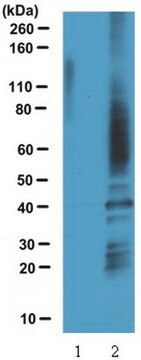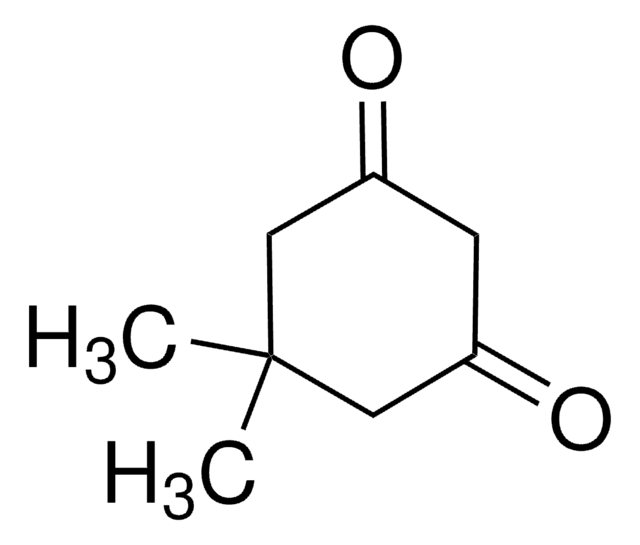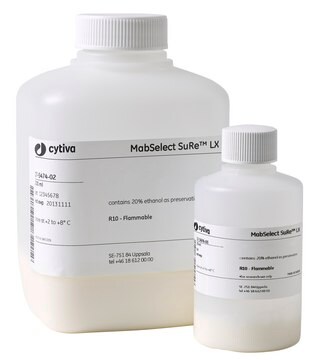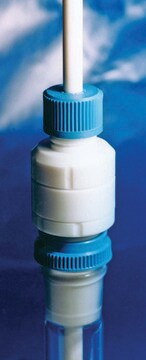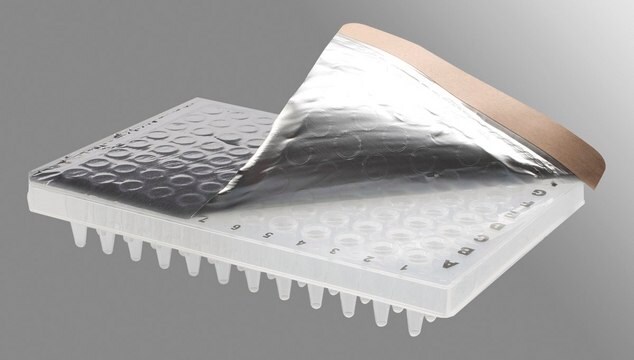07-2139
Anti-Cysteine Sulfenic Acid Antibody
serum, from rabbit
Se connecterpour consulter vos tarifs contractuels et ceux de votre entreprise/organisme
About This Item
Code UNSPSC :
12352203
eCl@ss :
32160702
Produits recommandés
Source biologique
rabbit
Forme d'anticorps
serum
Type de produit anticorps
primary antibodies
Clone
polyclonal
Espèces réactives
mouse, rat, human
Réactivité de l'espèce (prédite par homologie)
mammals
Technique(s)
western blot: suitable
Conditions d'expédition
wet ice
Modification post-traductionnelle de la cible
unmodified
Description générale
Protein sulfenic acid formation is a reversible post-translational modification that may be used to monitor protein oxidation on reactive cysteines within target proteins. This can be detected with protein sulfenic acid derivatised with dimedone.
Spécificité
This antibody recognizes proteins containing cysteine sulfenic acid derivitized with dimedone.
Immunogène
Epitope: Other
KLH-conjugated corresponding to cysteine sulfenic acid.
Application
Anti-Cysteine Sulfenic Acid detects levels of Cysteine Sulfenic Acid proteins & has been published & validated for use in WB.
Research Category
Apoptosis & Cancer
Apoptosis & Cancer
Research Sub Category
General Post-translation Modification
General Post-translation Modification
Western Blot Analysis: A previous lot of this antibody detected cysteine sulfenic acid in NIH/3T3 and HEK293 cell lysates.
Qualité
Evaluated by Western Blot in rat ventricular myocyte lysate.
Western Blot Analysis: 1:10,000 dilution of this antibody detected cysteine sulfenic acid on 10 µg of rat ventricular myocyte lysate.
Western Blot Analysis: 1:10,000 dilution of this antibody detected cysteine sulfenic acid on 10 µg of rat ventricular myocyte lysate.
Description de la cible
Multiple kDa are observed that increases with oxidized stress (H2O2).
Forme physique
Unpurified
Unpurified rabbit polyclonal with 0.05% sodium azide.
Stockage et stabilité
Stable for 1 year at from date of receipt.
Handling Recommendations: Upon receipt and prior to removing the cap, centrifuge the vial and gently mix the solution. Aliquot into microcentrifuge tubes and store at -20°C. Avoid repeated freeze/thaw cycles, which may damage IgG and affect product performance.
Handling Recommendations: Upon receipt and prior to removing the cap, centrifuge the vial and gently mix the solution. Aliquot into microcentrifuge tubes and store at -20°C. Avoid repeated freeze/thaw cycles, which may damage IgG and affect product performance.
Remarque sur l'analyse
Control
Rat ventricular myocyte lysate
Rat ventricular myocyte lysate
Clause de non-responsabilité
Unless otherwise stated in our catalog or other company documentation accompanying the product(s), our products are intended for research use only and are not to be used for any other purpose, which includes but is not limited to, unauthorized commercial uses, in vitro diagnostic uses, ex vivo or in vivo therapeutic uses or any type of consumption or application to humans or animals.
Vous ne trouvez pas le bon produit ?
Essayez notre Outil de sélection de produits.
Code de la classe de stockage
10 - Combustible liquids
Classe de danger pour l'eau (WGK)
WGK 1
Certificats d'analyse (COA)
Recherchez un Certificats d'analyse (COA) en saisissant le numéro de lot du produit. Les numéros de lot figurent sur l'étiquette du produit après les mots "Lot" ou "Batch".
Déjà en possession de ce produit ?
Retrouvez la documentation relative aux produits que vous avez récemment achetés dans la Bibliothèque de documents.
Hayato Irokawa et al.
The Biochemical journal, 478(7), 1453-1470 (2021-03-23)
Redox regulation of proteins via cysteine residue oxidation is involved in the control of various cellular signal pathways. Pyruvate kinase M2 (PKM2), a rate-limiting enzyme in glycolysis, is critical for the metabolic shift from glycolysis to the pentose phosphate pathway
Claire Maller et al.
Antioxidants & redox signaling, 14(1), 49-60 (2010-06-04)
Protein sulfenic acids (SOHs) are the principal oxidation products formed when redox active proteins interact with peroxide molecules. We have developed a new antibody reagent that detects protein SOHs derivatized with dimedone. Using this new antibody, we found that glyceraldehyde
Notre équipe de scientifiques dispose d'une expérience dans tous les secteurs de la recherche, notamment en sciences de la vie, science des matériaux, synthèse chimique, chromatographie, analyse et dans de nombreux autres domaines..
Contacter notre Service technique